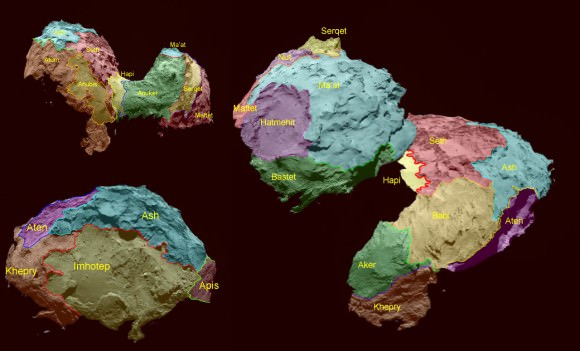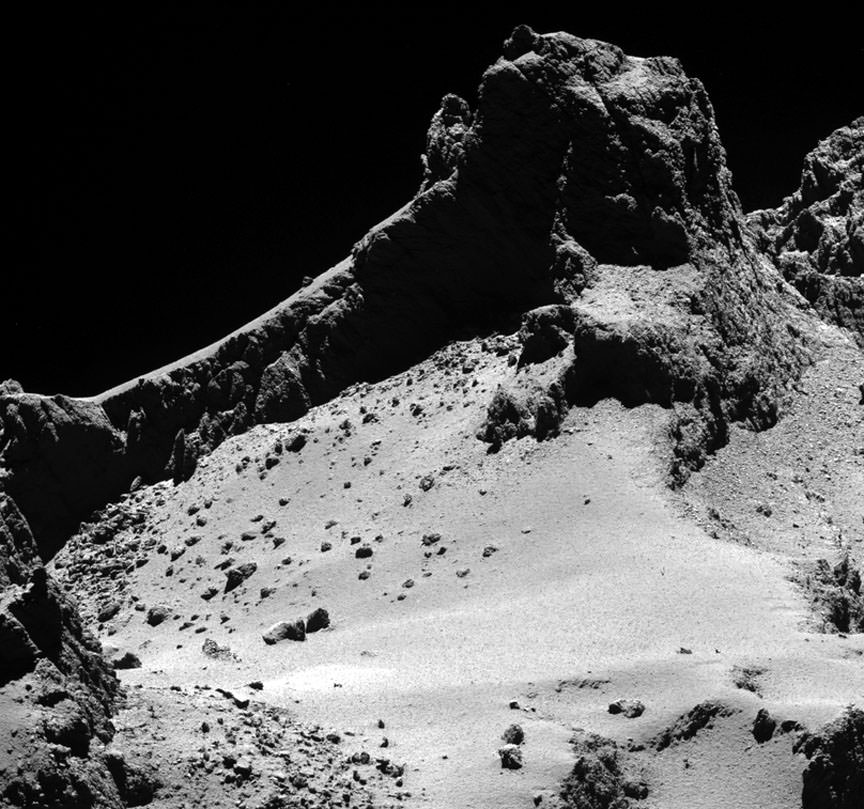We’ve subsisted for months on morsels of information coming from ESA’s mission to Comet 67P/Churyumov-Gerasimenko. Now, a series of scientific papers in journal Science offers a much more complete, if preliminary, look at Rosetta’s comet. And what a wonderful and complex world it is.

Each of the papers describes a different aspect of the comet from the size and density of dust particles jetting from the nucleus, organic materials found on its surface and the diverse geology of its bizarre landscapes. Surprises include finding no firm evidence yet of ice on the comet’s nucleus. There’s no question water and other ices compose much of 67P’s 10 billion ton mass, but much of it’s buried under a thick layer of dust.
Despite its solid appearance, 67P is highly porous with a density similar to wood or cork and orbited by a cloud of approximately 100,000 “grains” of material larger than 2 inches (5 cm) across stranded there after the comet’s previous perihelion passage. Thousands of tiny comet-lets!
Continue reading “Latest Research Reveals a Bizarre and Vibrant Rosetta’s Comet”

